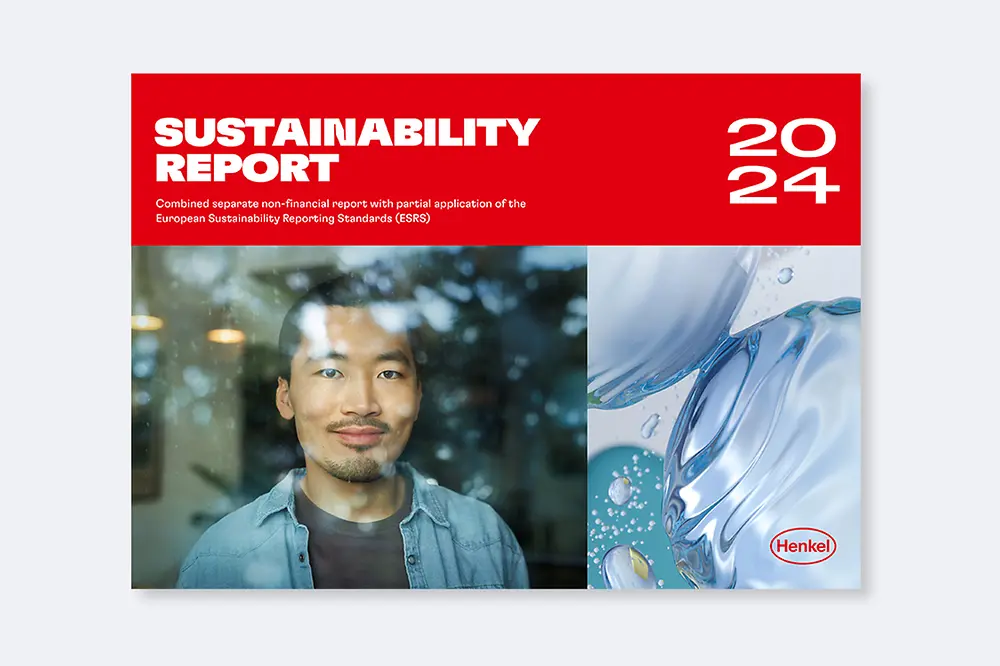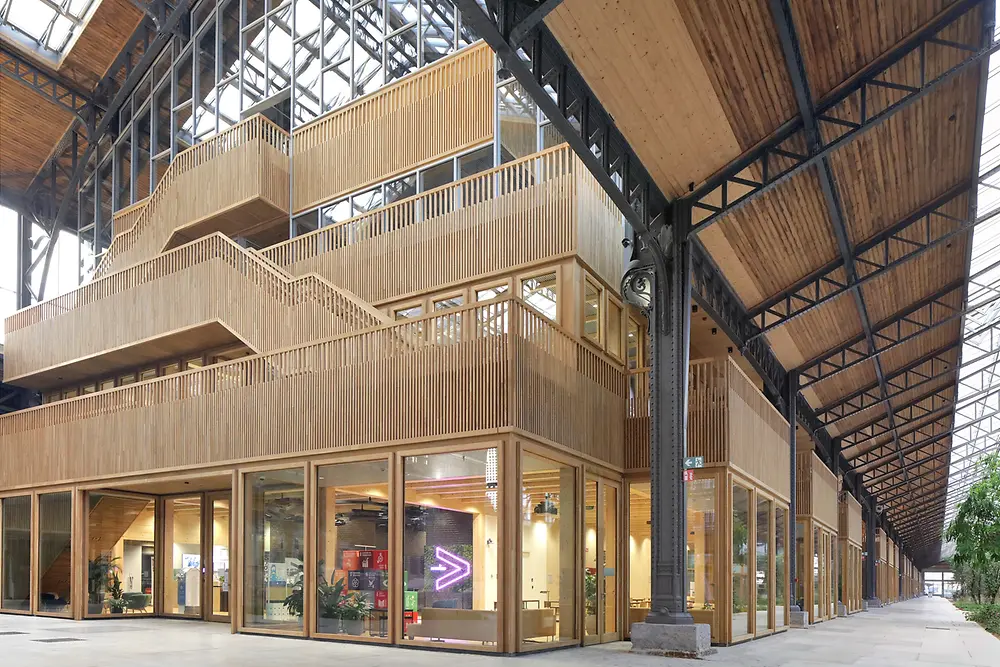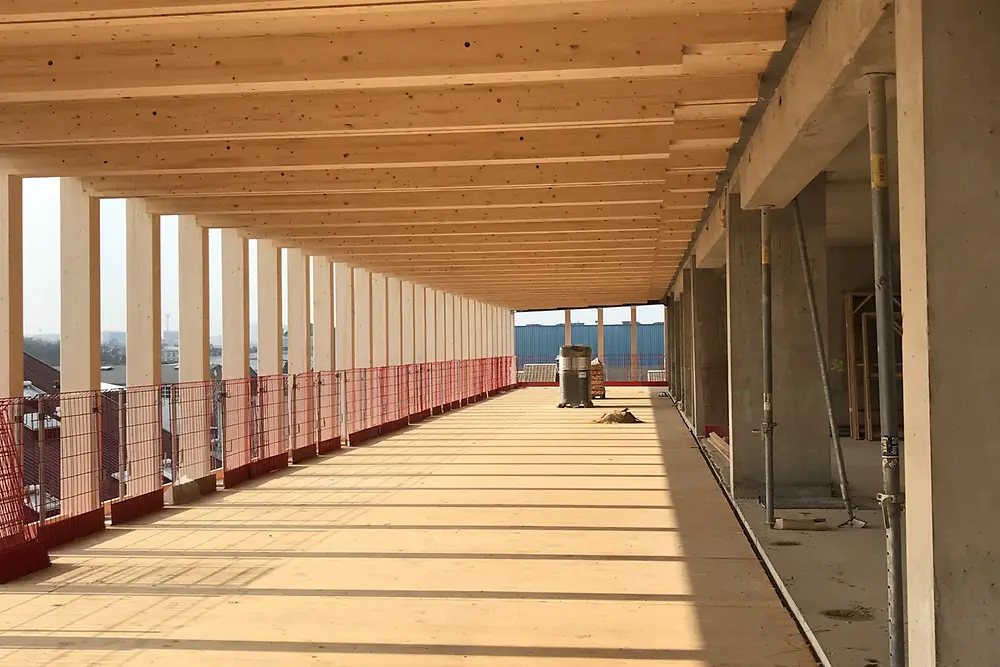Which role does construction play in climate protection? "A big one," says Christian Fild, Head of Global Engineered Wood in the Adhesive Technologies business unit at Henkel: "About 40 percent of CO2 emissions worldwide are caused by buildings. Eleven percent are generated by the construction itself, the other part is caused by the use of these buildings." In total, concrete is the building material with the biggest carbon footprint because of the necessary production of cement. Additionally, there already are supply shortages for raw materials such as gravel and sand, which are other essential components of concrete. The industry is therefore looking for more sustainable alternatives – such as wood. In this interview, Christian Fild explains why wood will (once again) play an important role in the construction industry in the future and how Henkel's innovative adhesive solutions are contributing to this.
The production of steel and concrete generates large amounts of CO2. Wood poses an environmentally friendly construction material alternative. Why?
Christian Fild: The benefit of wood as a construction material is that it causes less CO2 emissions during production. Wood does not have to be produced in blast furnaces or combustion plants or has to be extracted from the ground resulting in high energy consumption. It grows in nature and only needs soil, water, light and air. But it also binds CO2 from the atmosphere, at least while the wood is in use. Construction companies are starting to design buildings that can be taken apart and reprocessed. Large floor or wall elements, for example, are reused as construction products or furniture panels, which in turn can one day be made into chipboards. At the very end, after ideally more than 100 years of use, the wood will be thermally recycled. This is referred to as cyclical timber management.
Why was wood replaced by other construction materials for a long time?
Christian Fild: Wood is actually the original building material. Just think back a few thousand years. Houses were mostly built of wood or clay. Steel and concrete were introduced about 150 years ago. Both are very suitable construction materials, concrete especially due to its moisture resistance. These days, foundations are built in concrete and when it comes to high-rise buildings, steel is definitely the most suitable construction material, because it offers great stability and high rigidity. Every construction material has its place. For a long time, however, it was easy, cheap and also customary to use steel and concrete. Until 15 or 20 years ago, no one really cared about CO2 emissions produced during construction. The ever-increasing awareness of environmental issues as well as the sustainable use of available resources has changed that. However, only in the last 20 years has the technology of wooden construction advanced to a level that has made it genuinely competitive.
Which kind of advancements are those, for example?
Christian Fild: If you look at old half-timbered houses, you can see that the buildings last for a very long time, but after a while they become a bit crooked and deformed because the wood is constantly changing. About 20 years ago, cross-laminated timber was "invented". The multilayer solid wood panels provide a very high load-bearing capacity and stability. Even more interesting is the fact that wood is more suitable for constructing prefabricated buildings compared to steel and concrete. When you use wood, it can be prefabricated in factories and then simply be assembled at the construction site. You can manufacture much more precisely in factories than you could on site, which means that fewer errors occur. Instead of taking two months to build on site, a wooden building can therefore be completed in two weeks. This also results in significant cost savings.
Are our resources sufficient to replace steel and concrete with wood in the long term?
Christian Fild: Yes, because the resources grow back. That is the big difference between wood and concrete or steel. There is enough woodland to supply wooden construction. Of course, sustainable management is essential and it is not acceptable to simply cut down forests. But I would like to emphasize that steel and concrete also play their part in construction. One is not superior to the other. The materials should be used according to where they make the most sense. Today, there are also many hybrid wooden buildings for which the benefits of all construction materials are essential.
You are the Head of Global Engineered Wood. How did this department emerge?
Christian Fild: We started off as a small business 25 years ago which was later acquired by Henkel. When cross-laminated timber, a new wood-based material, entered the market, the industry was looking for a suitable adhesive. At that time, Henkel launched a very specific adhesive technology: a polyurethane adhesive for wood bonding. The technology proved to be very well-suited for wood construction, and our division has since grown a lot - particularly strongly in the last seven years, in which wooden construction has transformed from a niche product into a larger industry segment.
So, Henkel has developed product ranges specifically for wooden construction elements. What is special about this adhesive technology?
Christian Fild: Our formaldehyde-free polyurethane adhesives were the first ones to meet the high standards for load-bearing wood construction. Adhesives containing formaldehyde work very well, but they are also carcinogenic which is why they are used less and less. Henkel has made a really great contribution by enabling formaldehyde-free bonding in wooden construction. Another special feature is that you can manufacture very quickly, precisely and neatly with Henkel's adhesives as they are great for constructing prefabricated buildings.
Polyurethane adhesives are an important component for innovative and sustainable construction. Which role will Henkel adhesives play in this industry in the future?
Christian Fild: Our goal is simple: We see wooden construction as a huge opportunity in terms of sustainability. I can also put it the other way around: Without wooden construction, the climate targets cannot be met. We at Henkel want to contribute to this as best we can. In the adhesives business, as it is often the case, we can only contribute a very small part, but the technology enables the bigger picture.





